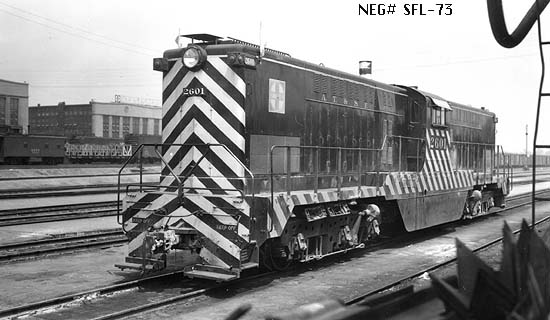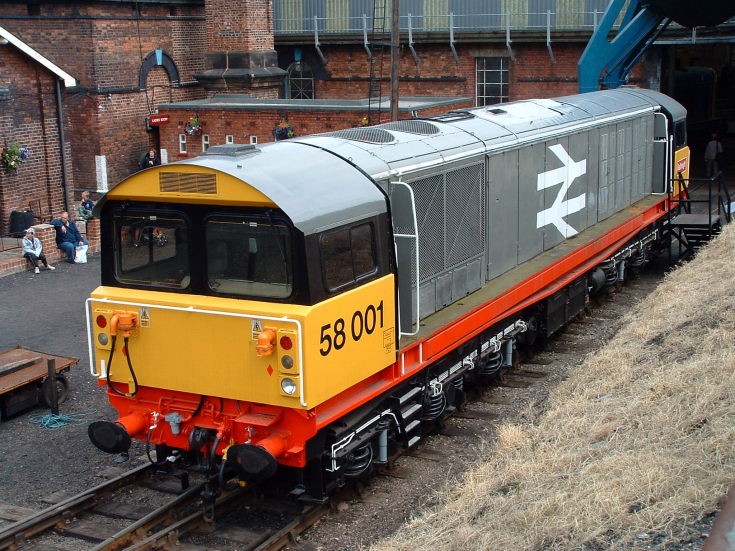^ To add to what I said above, this is what a typical late-1960s consist of a 'Great Canadian Fleet' flagship (Super Continental, Atlantica, Pacifica or Ocean) looks like:
- 1 locomotive setup (usually 2 Type 55s or PA-4s and 2 FPB-4s)
-- 1 extra locomotive (usually a PA-4) would be used on the train between Vancouver and Edmonton (Super Continental) or Seattle and Lethbridge (Atlantica/Pacifica) to help through the heavier grades of the Rockies
- 3 baggage cars
- 1 refrigerator/crew dormitory
-- 1 shorter-journey coach was operated on both trains from Lethbridge or Edmonton to Winnipeg
- 1 5-car coach section (made up of two dome coaches, two picture-window coaches and a lounge car)
- 2 sleeping cars
- 1 three-unit dining car
- 1 sleeping car
-- 1 extra sleeping car are part of the train during peak travel periods
- 1 Great Dome car
- 1 sleeping car
-- 1 extra sleeping car are part of the train during peak travel periods
- 1 dining car
- 1 lounge car
- 2 sleeping cars
- 1 sleeper/lounge/observation
The Great Canadian Fleet of trains was, at its peak in the 1950s, was made up by these trains:
Super Continental - Toronto/Montreal/Ottawa to Vancouver via Sudbury[1], Thunder Bay, Winnipeg, Saskatoon, Edmonton and Kamloops
Atlantica / Pacifica[2] - Seattle[3] to Halifax via West Spokane, Lethbridge, Regina, Winnipeg, Thunder Bay, Sudbury, Ottawa, Montreal, Quebec City, Fredericton and Moncton
Ocean - Toronto to Halifax via Montreal, Quebec City, Fredericton and Moncton
Wild Rose - Lethbridge to Fort McMurray via Calgary, Red Deer and Edmonton[4]
Cavalier - Detroit to Quebec City via London, Kitchener, Toronto, Oshawa, Kingston, Brockville, Montreal and Trois-Rivieres
International Limited - Chicago to Toronto via Lansing, Flint, Port Huron, Sarnia, Stratford, London, Woodstock, Brantford, Burlington and Oakville
Maple Leaf - Toronto to New York via Hamilton, Niagara Falls, Buffalo and Albany
Fleur de Lis - Montreal to New York via Burlington and Albany
Salish Sea - Portland to Vancouver[5] via Olympia, Tacoma, Seattle and Everett
Evangeline - Ottawa to Halifax via Montreal, Quebec City, Campbellford, Miramichi and Moncton
General Brock - Niagara Falls to Ottawa via St. Catharines, Hamilton, Oakville, Toronto, Oshawa, Port Hope, Trenton, Kingston and Smiths Falls
Northlander - Toronto to Moosonee via Huntsville, North Bay and Timmins[6]
Canadian Shield - Winnipeg to Ottawa via Thunder Bay, Sudbury, North Bay and Pembroke
Chaleur - Montreal to Gaspe via Trois-Rivieres, Quebec City and Campbellton
This is in addition to many, many local trains, particularly in densely-populated corridors and in areas where train service is quite important to local travelers. CN operated hundreds of diesel multiple units (mostly Budd RDCs) to handle this service as the age of steam came to an end, becoming the single largest user of the RDC. (They would also be the single-largest user of the Budd SPV-2000 later on.)
[1] The Toronto and Montreal/Ottawa sections of the Super Continental combined at Sudbury
[2] The train is referred to by the name of the ocean it is heading towards - westbound is Pacifica, eastbound is Atlantica
[3] In the Go North Universe the Columbia River treaty ended up with a different result thanks to First Nations support of the British in the area, resulting in everything north and west of Columbia River being Canadian territory, including the entire Salish Sea region
[4] The Wild Rose connects with the Atlantica at Lethbridge and the Super Continental at Edmonton to allow easier connections
[5] Winter runs of the Salish Sea go north to Whistler, British Columbia
[6] Operated by CN crews south of Huntsville, Ontario, Ontario Northland crews north of that





